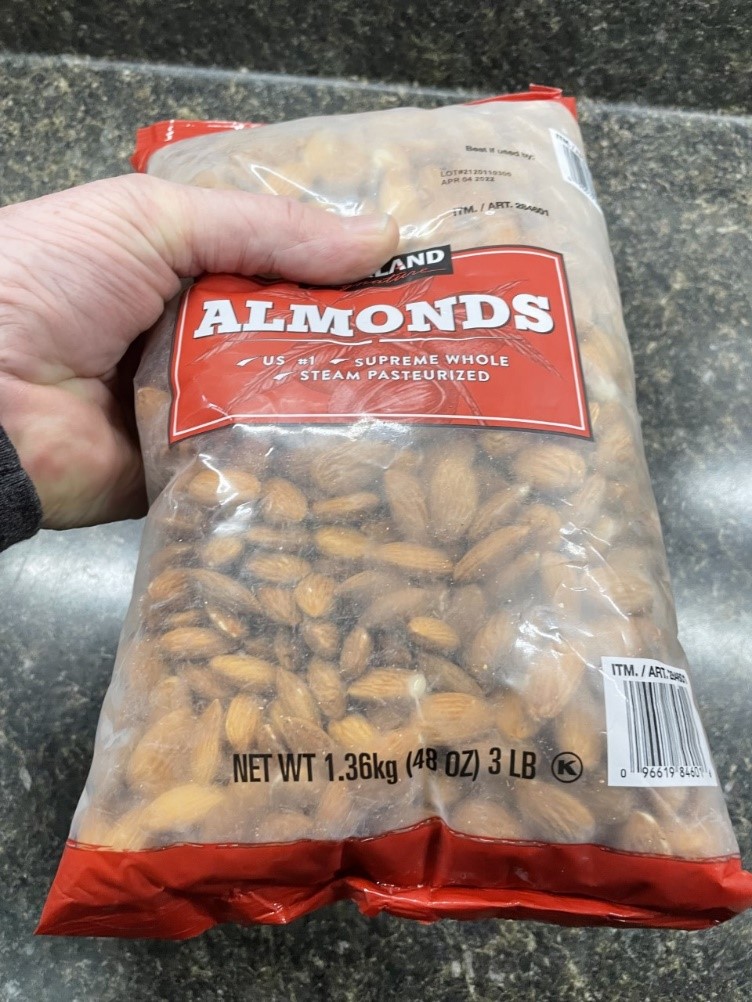Whistleblower saves Butte Creek springers

In March, Chris Tocatlian, who manages a duck club in the Sacramento Valley, noticed adult spring run salmon dead in an agricultural canal that feeds into Butte Creek. Butte Creek spring run salmon are federally protected as a threatened species. Chris shot video of the dead fish and shared it with GSSA and others to call attention to the problem. GSSA contacted top brass at CDFW, as did others, no doubt.
Within a few days the state promised to take action to address the problem. According to reports, overgrown vegetation in Butte Creek has acted almost like a beaver dam, forcing the creek to spill over into agriculture canals in higher volumes than it would otherwise. This has essentially redirected a significant portion of the creek out to fields and then back to the creek at a downstream site, where the spring run salmon were found. Thanks to Chris and everyone else who spotted this problem and worked to address it.
GSSA testifies at Water Board Workshop considering coming Sac River temperature problem

The State Water Resources Control Board (SWRCB) held a workshop on March 16 to consider the likelihood of another extremely dry year where inland water temperatures are likely to kill salmon eggs. The board heard from water and fish experts, including GSSA, that this year is shaping up to be as deadly, or worse, than last year. The board also heard from tribal representatives and people living in the Delta about the harm done to their communities by drought and state and federal water allocation decisions. The hearing occurred as federal experts ran different planning models to see if endangered winter run salmon could be spared the losses they took last year when fewer than three percent of the eggs hatched into baby salmon that survived down to the counting facility in Red Bluff. Fewer still survived to the Delta. This happened after water managers insisted on giving the majority of what little water existed to a handful of water districts, a practice drawing sharp criticism from many who testified. Instead of providing the fish the 53.6 degree water needed to hatch eggs, the water temperature exceeded 60 degrees.
GSSA’s John McManus reminded the board of fish and wildlife losses happening in California including those on the current board’s watch, and how their membership on the water board will be a stain if they allow more losses. GSSA executive committee member, and executive director of PCFFA, Mike Conroy also spoke to the water board and reminded them of the loss to the commercial salmon industry and ports and harbors up and down the coast tied to the decline of salmon.
In closing remarks, two of the board members expressed deep concern over the possibility of water policies like those of 2021, where many salmon of all runs were annihilated by hot water. GSSA has also been asking the public to comment to the water board about the need to prioritize water deliveries this summer, after accounting for health and human safety, to keep salmon runs from disappearing. It’s not too late! Make your voice heard.
GSSA works to increase SF Bay releases at Ft. Baker and new Richmond site – And get some kids in on it

The state is producing millions of additional fall run salmon this year and expects to truck most, if not all, to the Bay and coastal release sites on the assumption that drought conditions in the Sacramento River will make it too dangerous to release fish into. The survival of these fish depends on where they’re released, which is why GSSA is working with the state and federal governments to double releases of hatchery salmon at Sausalito’s Ft. Baker this year and hopefully into the future. GSSA asked for the increase in Ft. Baker releases, in part at the request of state fish and wildlife officials who appreciate the relationships GSSA has developed with key stakeholders.
Survival of fish released at Fort Baker is at least twice as good as the traditional release site near Vallejo and sometimes up to three times better. This has proved a huge boon to all fisheries, ocean and inland.
GSSA has also discussed the Park Service granting a more permanent permit to release at the site after the current research permit expires later this year. Moving more releases to Ft. Baker in Sausalito provides the equivalent of building or expanding existing hatcheries.
In addition, GSSA went prospecting for additional SF Bay sites where this year’s bigger than normal number of releases could occur. We found a likely candidate spot in Richmond and then arranged with the City of Richmond and CDFW to do a site visit. All parties thought the site was promising. Of high importance to both CDFW and the City of Richmond is the idea of getting local kids down to see the releases that may occur. GSSA has been in touch with the Richmond Police Activities League, which received the idea very favorably. An eventual release at this site should be good for both the fish, the fishermen and the local kids who may learn a little more about salmon and their local waterfront.
GSSA Facebook almond post goes semi-viral
GSSA recently generated a high volume of Facebook traffic after posting the photo and caption below.

Somehow, it seemed to have struck a nerve. Comments included some from almond supporters who probably haven’t noticed the huge increase in plantings right through drought. As author Mark Arax put it, “In the driest decade of California’s recorded history, we planted hundreds of thousands more acres of almonds and pistachios. Those are permanent crops, meaning that they need water every year. The lesson of drought should be to get smaller, and smarter. But these guys have gotten bigger.” And salmon have suffered as their rivers are diverted from their natural course.
GSSA pushes for Feather, McCloud River reintroduction efforts

With drought and low survival of salmon eggs spawned in the wild, GSSA is pushing a new front to avoid genetic bottlenecks for Central Valley salmon. We’re working on both the Feather and McCloud rivers to get adult salmon planted above dams and reservoirs in Sierra streams that still have good salmon habitat.
GSSA has recently been in touch with managers at the National Marine Fisheries Service who have the legal authority to require DWR and PG&E to save or restore salmon on the Feather River. One option could be to require DWR and PG&E to move adult spring run salmon up above Lake Oroville into upper branches of the Feather River, where cold clean water still flows.
GSSA’s John McManus made the case for why we need to take these steps now in a widely circulated opinion piece. This followed a letter sent to the National Marine Fisheries Service and others calling for enforcement of a relicensing condition on the Oroville Dam that could move salmon upstream of the dam.
GSSA is also trying to help save some of the last winter run salmon, which are expected to again meet lethal water temperatures in the upper Sacramento River this summer. Federal and state officials will try to capture adult winter run, above what’s needed to supply the Livingston Stone and Coleman hatchery programs. It’s possible these “extra” adult fish may be released in parts of Battle Creek above the Coleman Hatchery or maybe even in the McCloud River, where they originally came from. Both locations are expected to have cold enough water to hatch out spawned eggs. All of these efforts assume that stream flows downstream of the dams during the spring will be adequate to get the juvenile salmon safely to the Delta and ocean.
Fishing seasons proposed, Commercials to take major hit, Klamath concerns, spring run concerns warned about for next year

Soon we’ll know for sure what the ocean salmon fishing seasons, sport and commercial, will look like. Based on the three season options for both sport and commercial that came out of the Pacific Fisheries Management Council (PFMC) meeting in March, we can report that sport salmon season will open April 2 from Pt. Arena south to the Mexican border. But this will be interrupted, with a closure north of Pigeon Point likely in May and/or parts of June, details to be determined. Commercial salmon fishing will start on May 1 south of Pigeon Point. Above Pigeon Point, commercial fishing is looking to be very limited with less than two weeks open in both July and August. This severe limitation is aimed at conserving a low number of adult Klamath River fish and king salmon originating in coastal rivers. The inland salmon fishery is expected to follow the normal July 16 opener. Coming out of the March PFMC meeting, the expectation by fishery managers was that, with the constraints on the commercial and sport fisheries, the return of adult fall run king salmon to the Sacramento Basin is likely to be close to 180,000 fish. If true, this will be a sharp increase from recent years.
Court rules on GSSA efforts to stop salmon carnage

On March 11 a federal judge granted a request by the state and federal governments to use an interim set of operation rules to run the state and federal water projects while the feds develop a new long term rule set. The court turned down a request by GSSA and allies to order better protections for salmon and other wildlife. The court ruling may have little on the ground effect this year since dry conditions are leaving state water managers with very few options. But they could make a big difference once it starts to rain again.
On March 25 (after the court ruling), state and federal water managers filed a petition with the State Water Resources Control Board seeking permission to throw even the interim operation rules out the window. The water board has granted such requests in the past and is expected to again. One consequence is that requirements to release reservoir water to push back salinity encroaching on the Delta will likely be waived. The reservoir releases needed for this often also help juvenile salmon trying to migrate out of the Central Valley.
The state still has the legal authority to order reduced diversions to protect state wildlife, including salmon. There are reports from internal federal sources saying the state is likely to exercise that authority this year to keep hot water in the upper Sacramento River from entirely wiping out this year’s winter run salmon spawn. If such a deal emerges, the state might use taxpayer money to pay senior water right holders to buy peace. GSSA will continue advocating for salmon as decisions are made this spring about water temperatures.
Santa Rosa Dinner update

After shooting for an April 1 Santa Rosa dinner, we’ve rescheduled it to June 3 to get beyond covid issues. Tickets are for sale, either individually or by the table. All the normal great trips and gear will be available to bid on or win in raffle. A great cause will be supported.
Renew Your Membership

If you haven’t done so already, please consider renewing your membership at $35 for the coming year. We have a lot of work ahead and can’t do it without member support to keep the lights on and the staff working. If you feel like providing more support, check out the higher membership categories available.
There’s a lot of work unfinished and a lot of work ahead. Thanks for your support, as always. You can renew online or mail a check in to:
P.O. Box 320096
San Francisco, CA
84132
